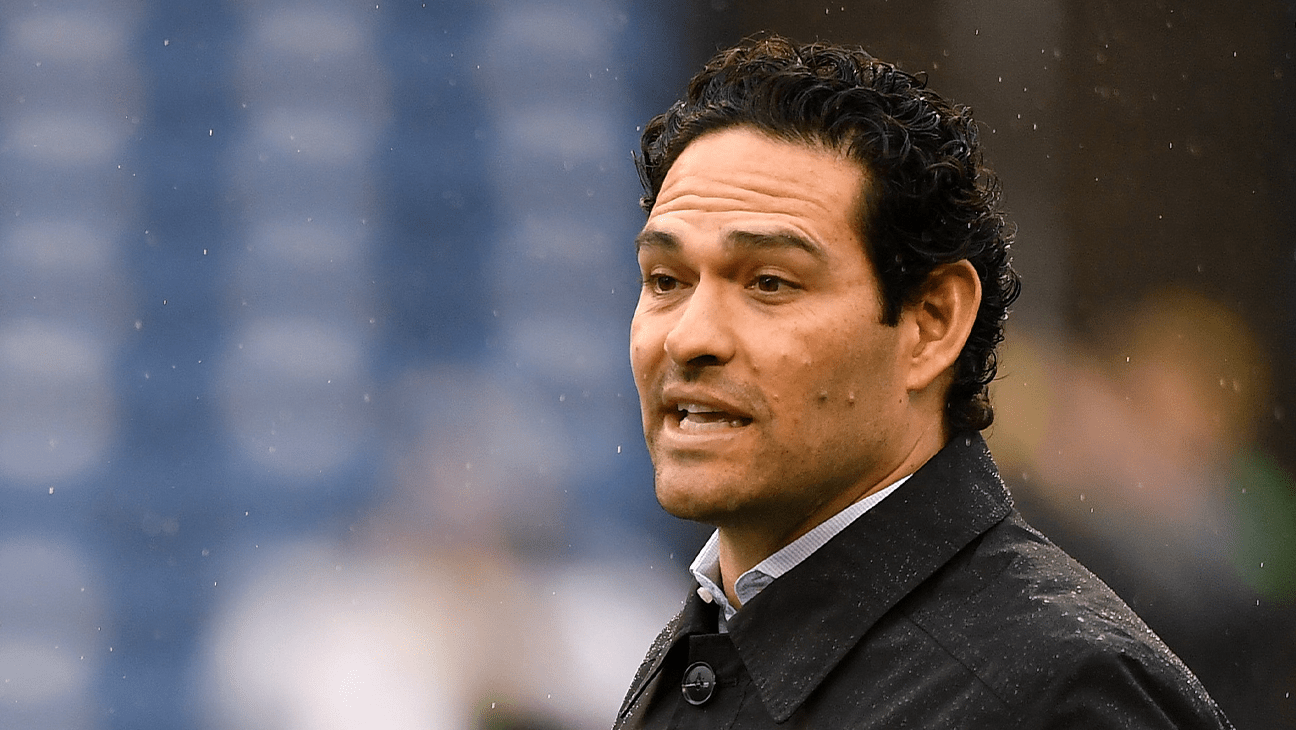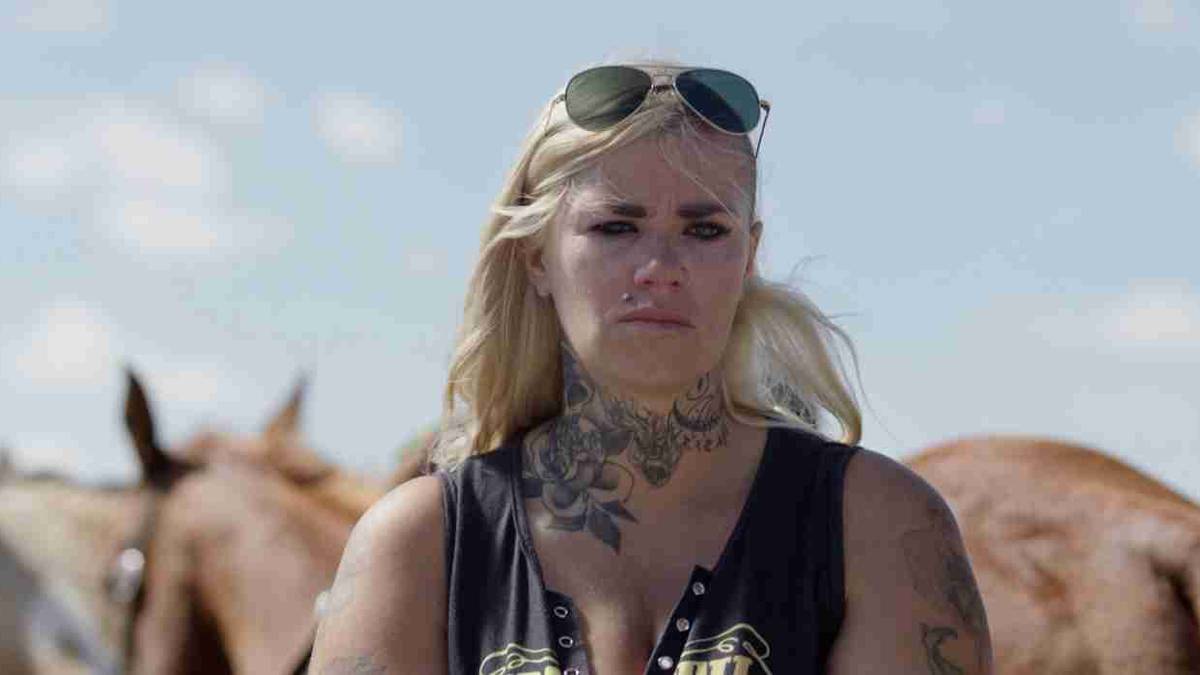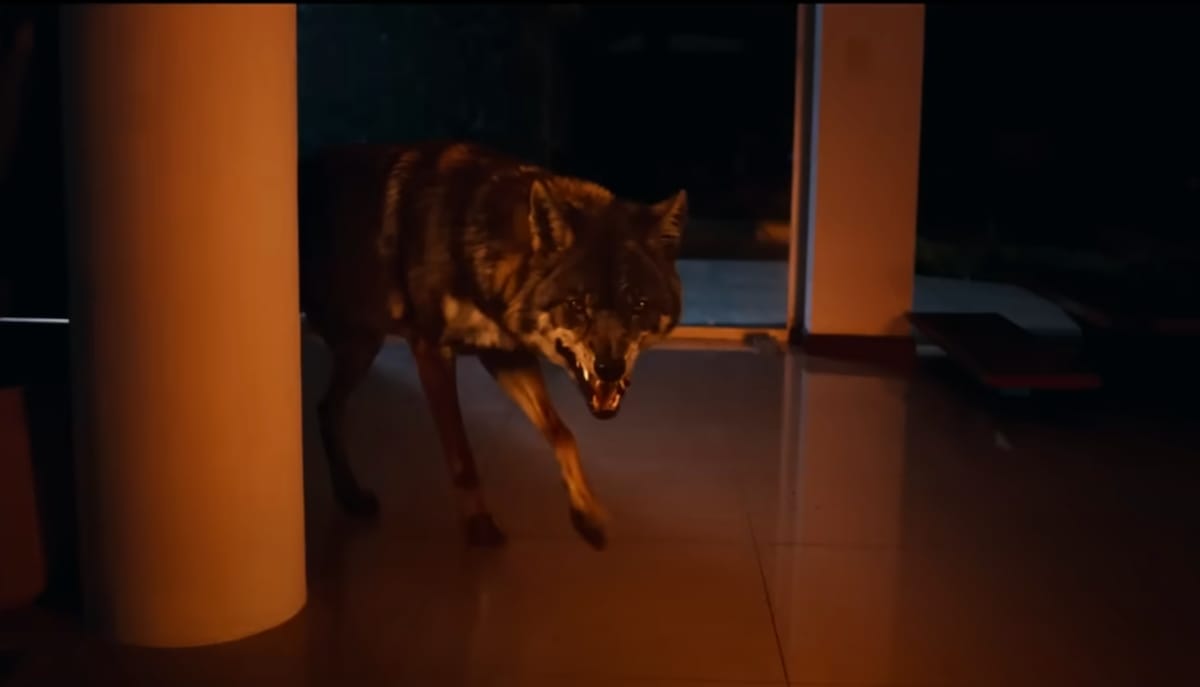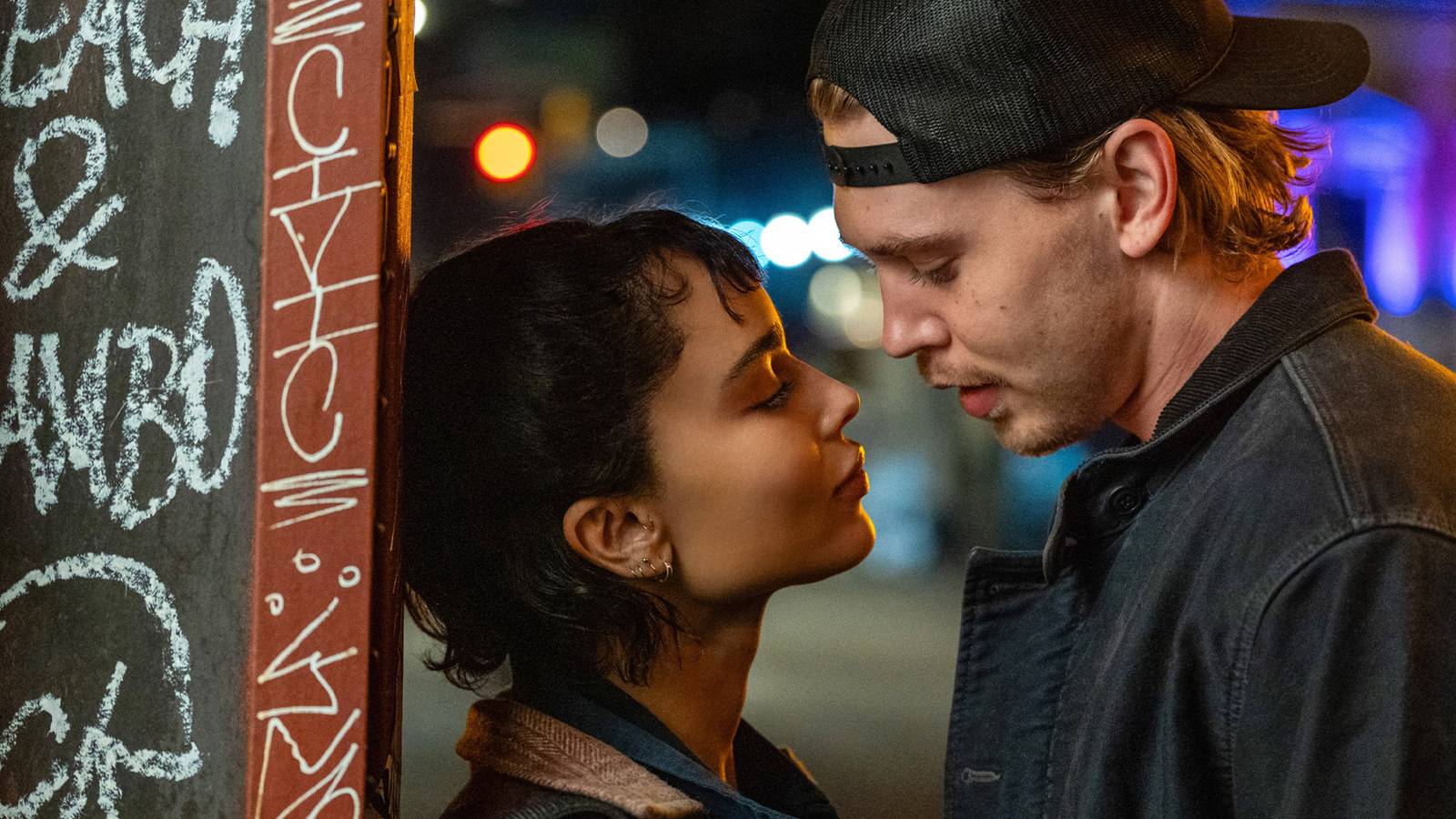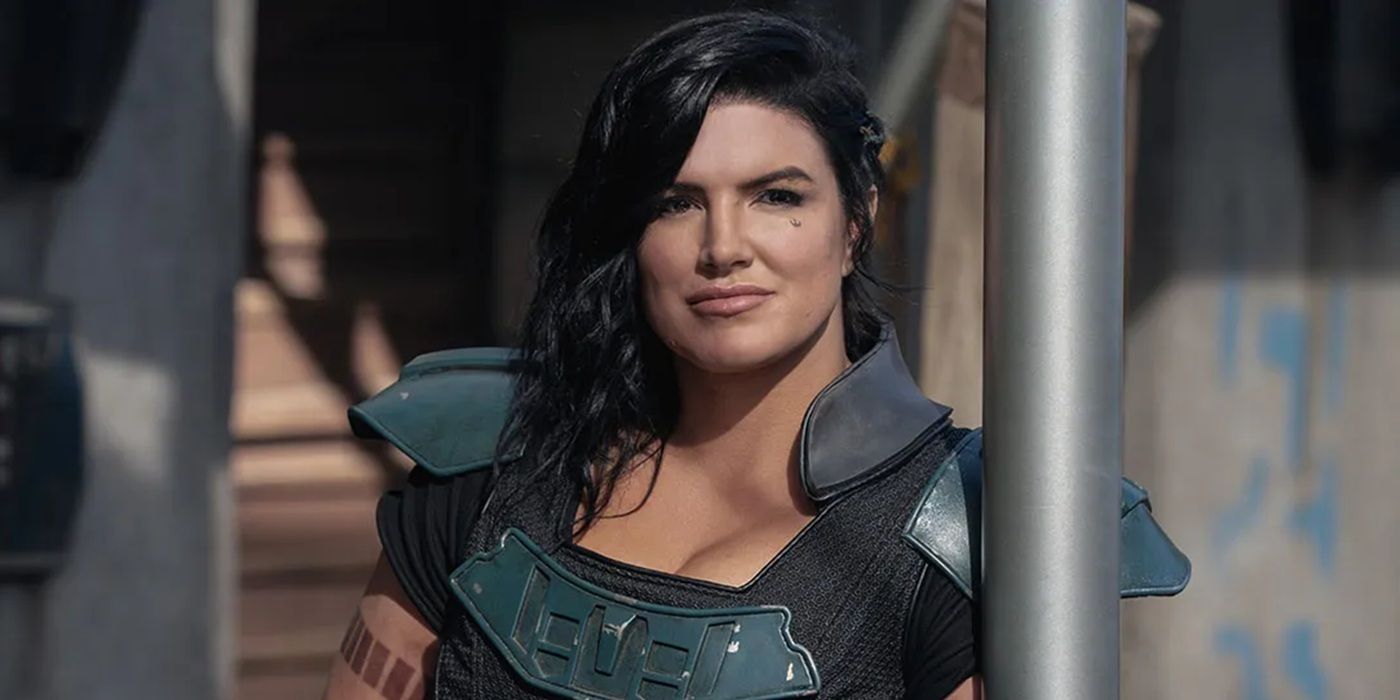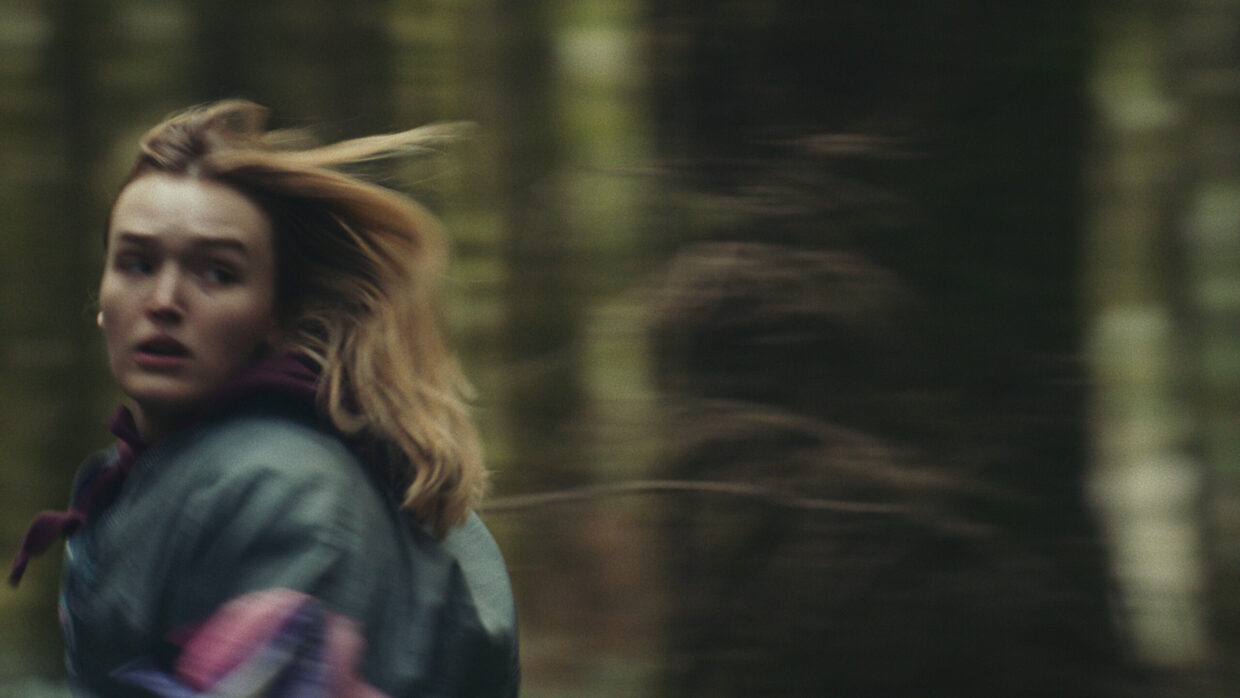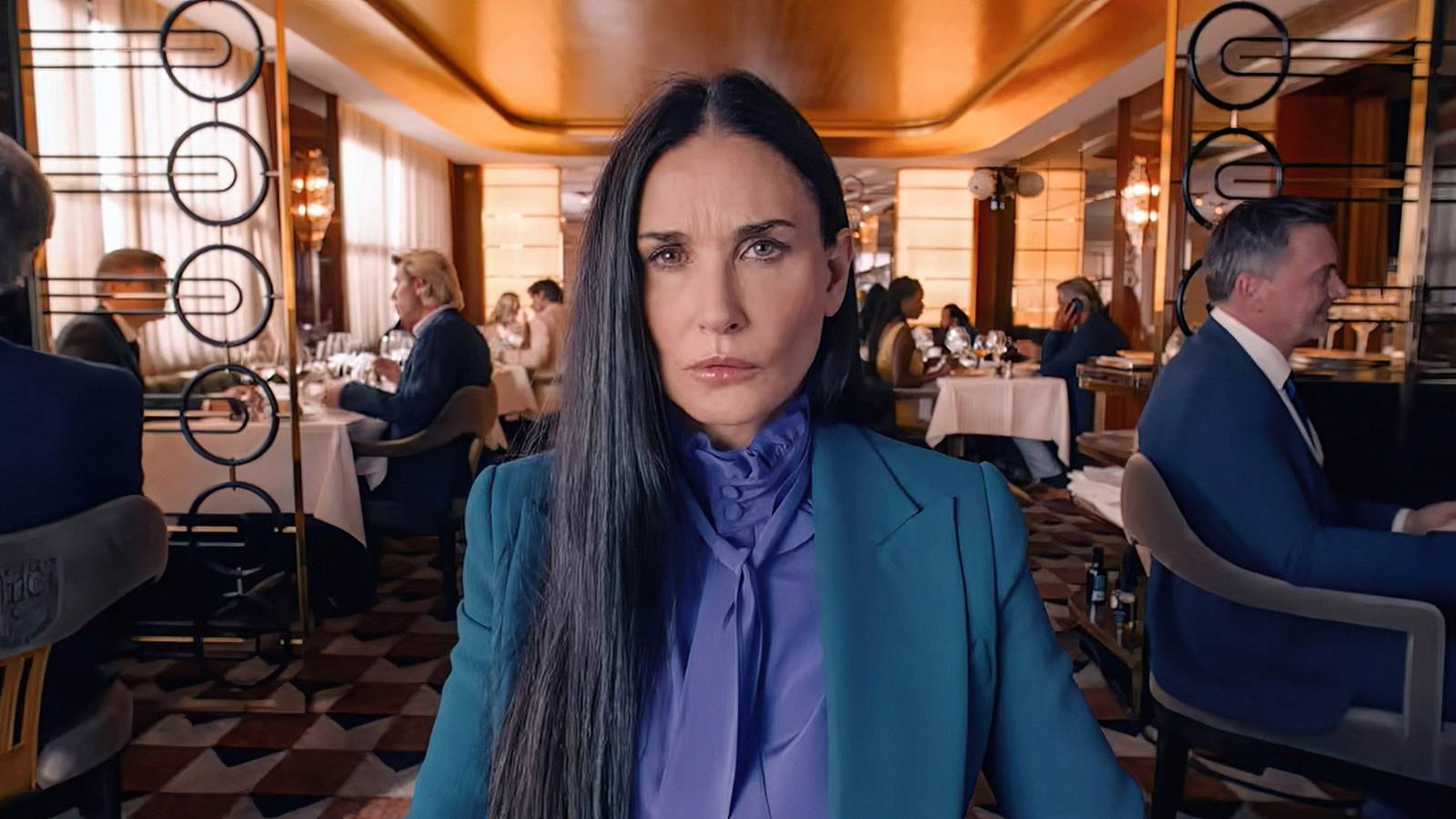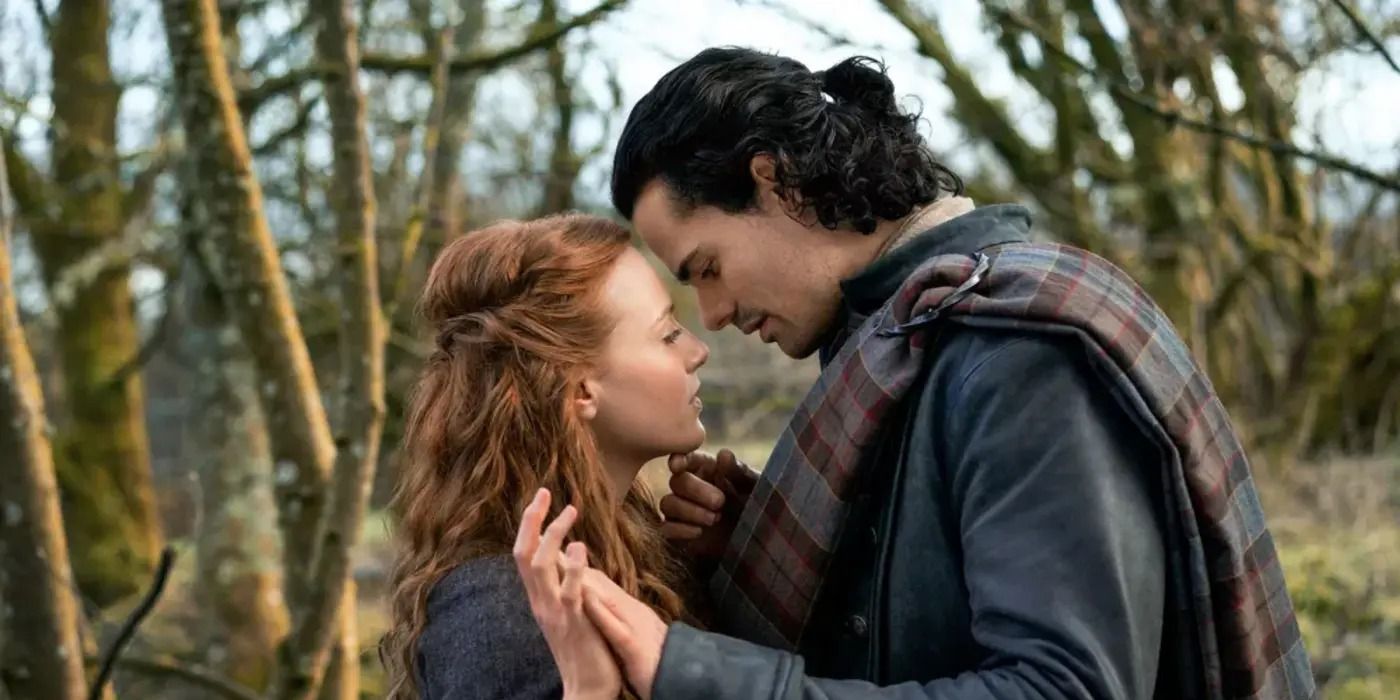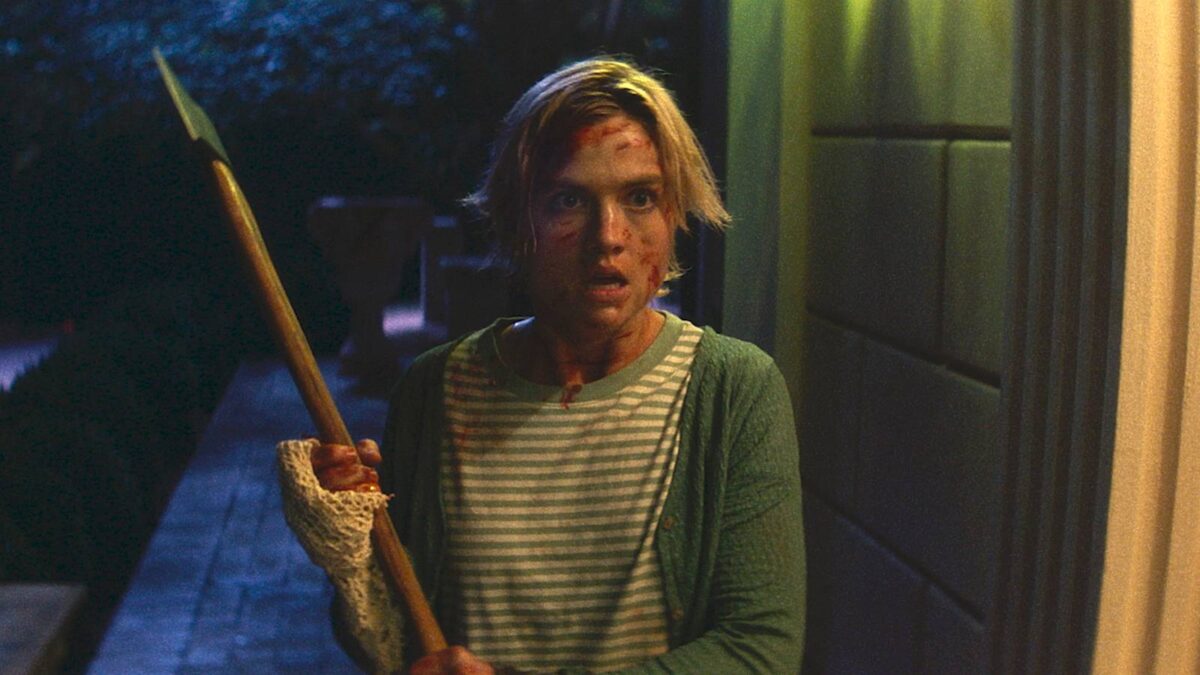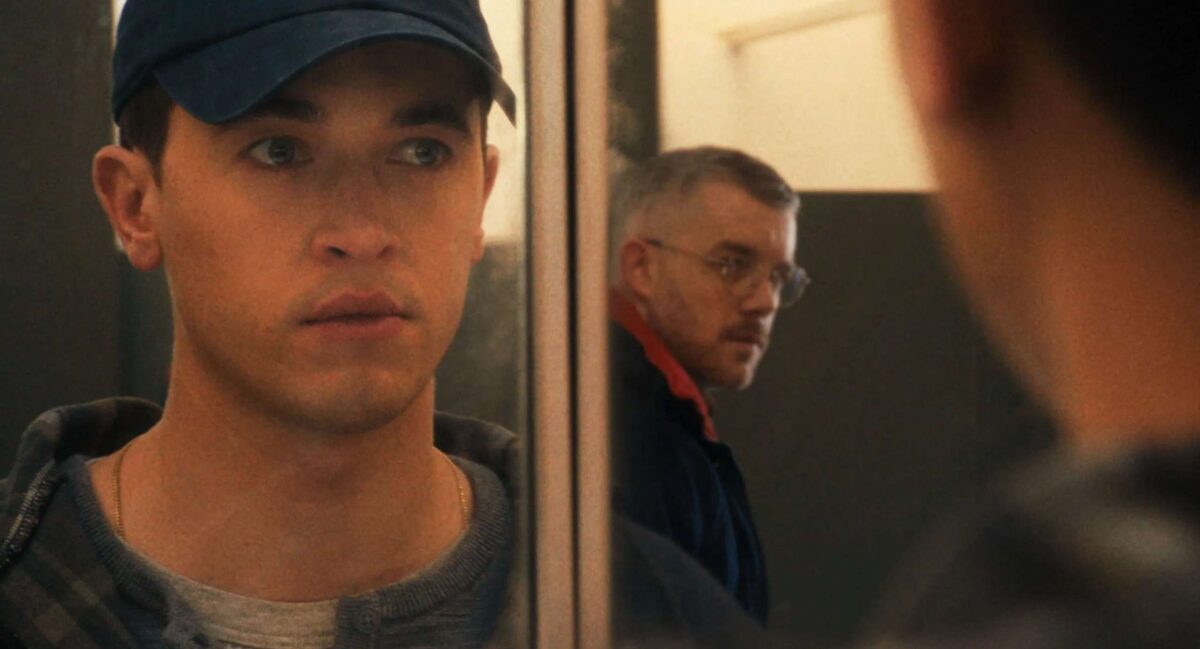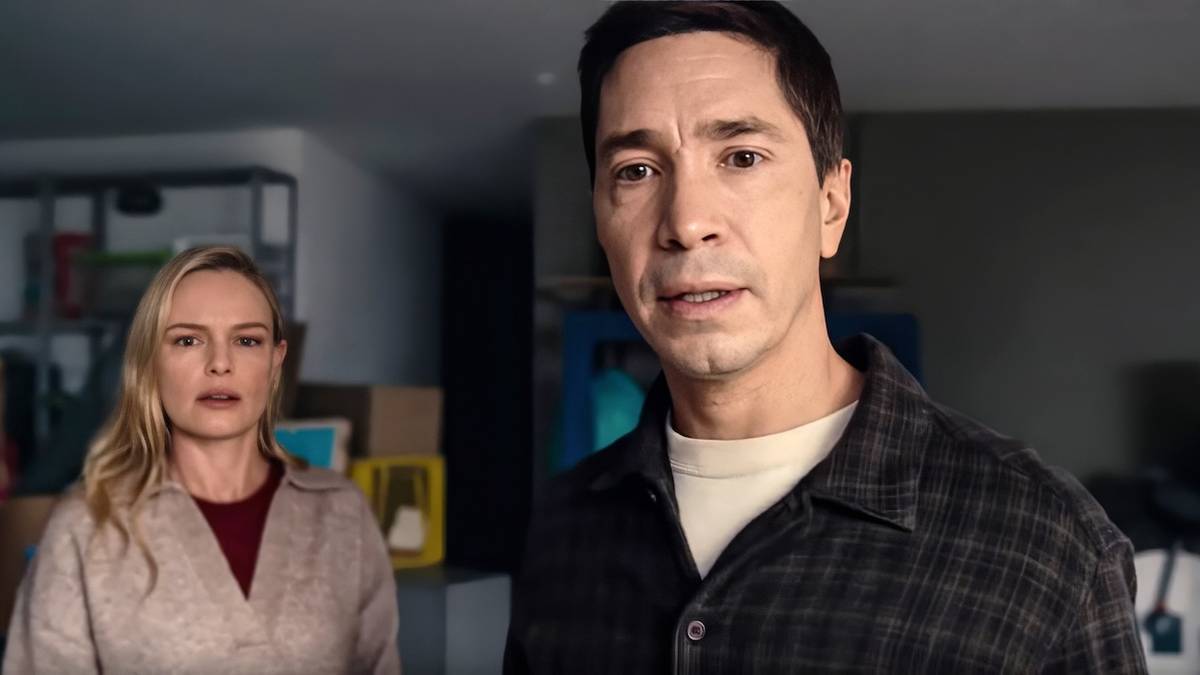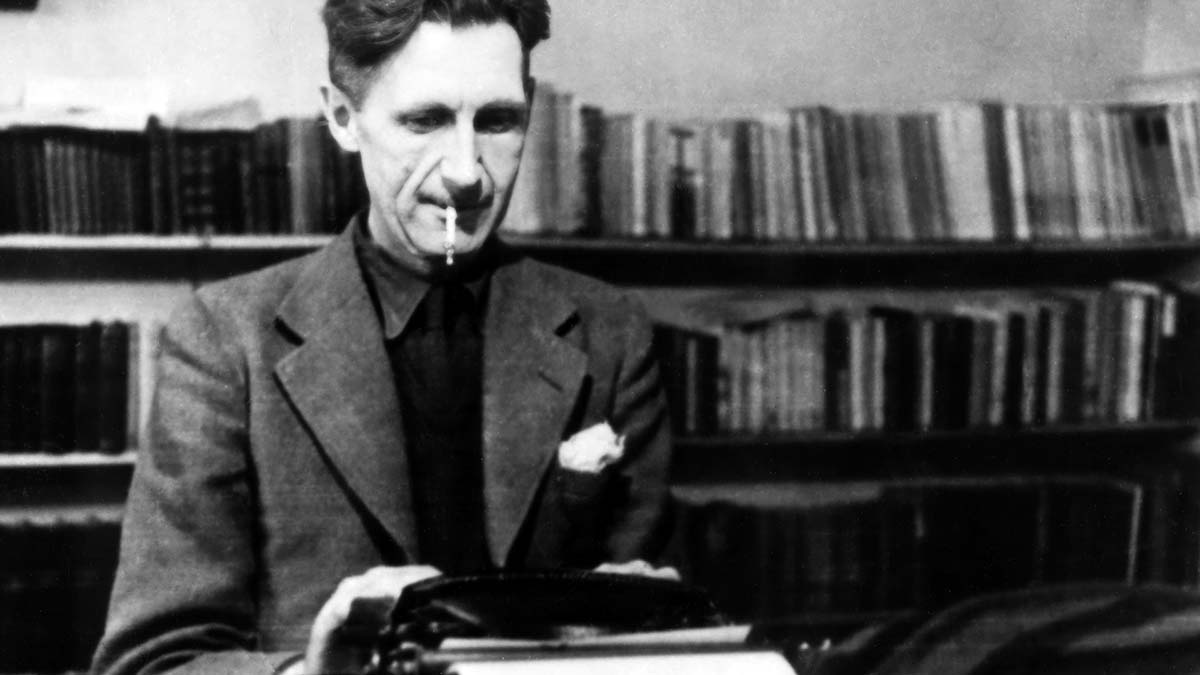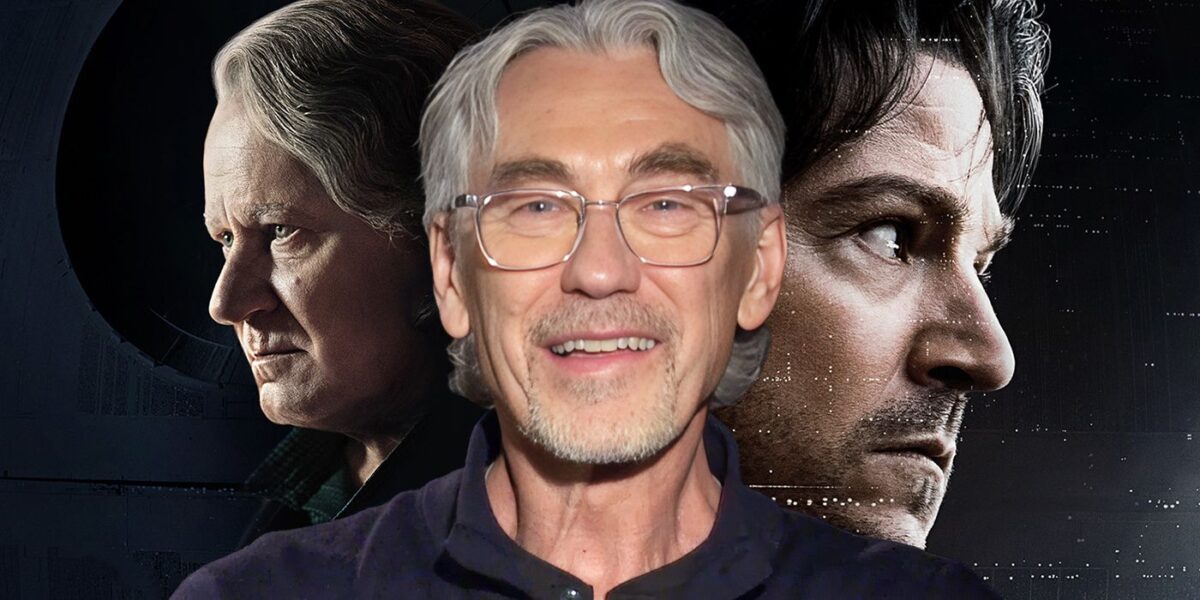
‘Andor’s Tony Gilroy on Taking More Risks in Season 2 and THAT Ending [Exclusive]
May 17, 2025
Editor’s note: This interview contains spoilers for Andor Season 2 including the finale.
Summary
Tony Gilroy shares new insights on Season 2 of Andor in an exclusive interview with Collider’s Steven Weintraub.
He discusses character evolution, emotional scenes, unused concepts, deaths, and more.
Strikes during production benefited Andor Season 2, providing a chance for fresh eyes and improved sequences.
Since the release of Season 1 in 2022, Andor has proven that not every Star Wars story has to contain Jedi, lightsabers, or chosen ones to make it compelling and incredibly beloved. The series has earned dozens of award nominations and consistently high ratings — both critically and with fans. The series has clearly shown that a slow-burning, politically charged drama that focuses on the everyday characters at the heart of the rebellion is compelling television.
Behind the incredible series is creator Tony Gilroy, who, through his vision, has transformed a key character from Rogue One into a necessary and irreplaceable anchor for the wider Star Wars narrative, deepening Cassian Andor’s (Diego Luna) journey through the power of the episodic format, and changing what Star Wars can mean for both creators and fans.
Now that the series has ended, Gilroy and Collider’s Steve Weintraub spoke at length about the making of Andor Season 2. During the wide-ranging and spoiler-filled conversation, Gilroy discusses the creative process, taking a deep dive into everything from the writing room dynamics and story structure decisions to production challenges and what aspects of the series’ production created narrative shifts. Gilroy also discusses the evolution of the series’ characters, the emotion behind major scenes, sequences, and deaths, and reflects on unused concepts and what it takes to meaningfully include beloved Star Wars characters into the series’ episodes.
Check out the conversation below.
Tony Gilroy Breaks Down His Writing Process
The creator and showrunner explains how he mapped the series from Season 1 to Rogue One.
COLLIDER: If Andor hadn’t been greenlit for two seasons, do you think you would have had a second season after the first season?
TONY GILROY: If we couldn’t get the funding to fully make the show properly, we were willing to finish after the one season and just have it be the making of a revolutionary. That was our only option if we didn’t. But we couldn’t find a way to envision a skinny version of the series.
I feel like more people are talking about Andor Season 2 right now than they were when Andor Season 1 was out. Has anyone told you how it’s doing in relation to the first season?
GILROY: No, I only know atmospherically. It’s a completely different experience. Completely different experience. We were anomalous and weird, and what were we? And what was it? The times were different. We also did something this time that was really smart. We released all 12 episodes to a lot of people.
More than that, I think that the release strategy of Season 2, of releasing each block together, was brilliant because everyone is watching their movie every Tuesday night. If you could go back in time, would you change the release of Season 1, so each block was released together?
GILROY: I wouldn’t. I wouldn’t because it took a slow burn for us to get the attention that we needed. We were so obscure. And also, to tell you the truth, we just didn’t have the guts. We had no idea when we released Season 1. We made the whole thing under a blanket. Nobody paid any attention to us. Disney sort of knew what we did, but there were no focus groups, there were no screenings. There was no nothing. It was like, “Holy shit, what do we have?” So, we wouldn’t have had the balls to do that the first time. I’m not sure. The way this worked, as an evolution, I think it was kind of perfect.
Whose idea was it to put the Battle of Yavin stuff at the beginning of each block, letting people know when this is?
GILROY: Communal decision. I think it was always communal. Johnny [Gilroy] and I argued whether the Time Grapplers should hit the bell once or twice. Shit like that. [Laughs] But I don’t really remember. Communal decision.
9:45
Related
‘Andor’s Tony Gilroy Reveals Which Season 2 Plotline He “Had To Really Sell” To Make Happen
Genevieve O’Reilly also discusses exploring Mon Mothma’s heritage in Season 2.
When you started working on Season 1, how much did you know the arcs of all the characters and where they would end up, and how much was it like, “We’re going to do Season 1, and then we’ll figure out Season 2?”
GILROY: When we started Season 1, when Season 1 was built, it was like, “Oh my god, we’re gonna do this for five years.” Somehow, that was a conceivable idea. So, what did I know? I knew Mon Mothma was going to live. I knew Diego [Luna] was going to live. I promised Stellan [Skarsgård] before he signed on that no matter what happened, I’d make sure if he wanted to, I would kill him during Season 2, because the contracts are so penurious, so I promised him he would get two. But no, I didn’t really. I knew enough about television to know that you’d have enough time to watch people rise and fall and see who you liked. What if you have an actor who’s a stiff? You don’t want to write yourself into a corner with someone that you don’t like. So, beyond that, probably not as far.
So it was in the discussion of Season 2 where you actually figured out where and when Luthen would meet his fate, because we all knew he would meet his fate. It’s just a question of where and when.
GILROY: Yes. As Season 1 was now shooting, in probably August or September of that year as they were in prep, I was beginning to think about the second season. Then, as we were shooting Season 1, that’s when I went up to Scotland to see Diego, going, “Dude, what are we going to do? Because there’s no way we can do five.” And that’s the point where we really decided to do the whole next four years in the second season. Then, when I sketched it out, I had a lot of stuff on the table, a big compost pile to pull from, so I could pull stuff. Then, as promised, Stellan gets out in two seasons.
Image via Disney+
What I really want to know is when you’re working on the arc and the storyline of these five years, how much are you going into a bible in terms of really figuring things out? It’s really hard to do what you did, and I just want to understand how you guys were figuring it out in the writers’ room or in the writing process.
GILROY: When I had the four-year thing, I literally probably went back up to the hotel room after we had a drink, and probably that night in the hotel room, I was like, “Oh my god, what’s it like for four years?” It’s like, “Wow, this is really freaking cool. You could jump four years, but I’ve got to come back. The first one has to be the wedding, and a wedding should be a couple of days. What if I could do the whole thing in, like, a Thursday, Friday, Saturday? What the fuck? Holy shit. Maybe I can do that! God, if I do it once, I wonder if I could do that again. Then maybe that should be a rule. I won’t get hung up. If it’s a rule that fails, then so be it. But maybe that’s a rule.”
So, I go to the second block, and I go back, and I know that in block three I have to do Ghorman. I know that if I’m going to build Ghorman with Luke [Hull], it’s going to be very expensive, so Ghorman is going to have to figure into multiple episodes and multiple two-blocks. Then, what if Ghorman is a nexus? What if it’s the Casablanca that brings everybody together? That’s really cool. So, those things followed really naturally.
Then, the last block is the lead-in to Rogue. “Well, I guess if I’m going to kill Luthen, I would kill him there. His death should really represent something.” Episode 12 takes care of itself in a weird way. And then I start making a mess. That was in the spring, so I worked on that from March all through the summer with Luke, and then the writers’ room is probably in, I don’t know, October/November. I come in with a lot of material when I come in. I wrote the first scene and the last scene of each block, hard, as proof of concept so that no one could say, “Hey, man, this isn’t going to work,” or, “You’re screwing me here. I’m going to have to do all this backfilling and exposition,” or whatever. I was like, “No. Nobody can argue with me. This shit works.”
Then, with Danny [Gilroy] and Beau [Willimon] and Tom [Bissell], it’s a mass blab-a-thon scrum for five or six days of filling in every blank. Like, “What about this? What if she does this? No, that would never work. You’re an idiot. No, this is a good idea.” On and on and on. And Beau at a whiteboard, pretending he’s a college professor, the classic showrunner at a whiteboard thing. And we made mistakes in there, and there were things we couldn’t afford. We designed things in there that we couldn’t afford, and then they take that off and they go do drafts. But that’s the process.
In ‘Andor,’ No One Can Hear You Scream
Season 2 almost had an Alien-inspired episode.
Image via Lucasfilm
That’s the thing that I think a lot of fans of the show are very curious about: the what-ifs. In the writers’ room and when you’re making the show, you hit budgetary limitations, or it’s just scheduling, or whatever it might be. What’s something that you really wanted to do, and then ultimately, because of scheduling or whatever it might be, you just couldn’t pull it off?
GILROY: The K-2 reunion, Danny did that third block, and [Episode] 9 was a standalone episode at that point. Episode 9 was an episode where Vel and Melshi were supplying Yavin. It was a huge supply ship that was bringing all these supplies to Yavin, and a KX unit gets on the ship. It was sort of like Alien. It was like a horror movie, what happens on this ship. Cassian was on there, as well, and it was a standalone episode. It was really badass. And Danny poured his ass into it. And they were like, “You gotta lose something really big.” And that was the big thing that fell off right away. “We can’t do that.” Now, I think, honest to god, it was really cool, but I wouldn’t go back to it. I wouldn’t swap it out. I like what we have now better.
I think what you have is honestly a lot better because we’ve seen what you just said to me a lot in movies, and the simplicity of the scene, the way you do it in Andor, where he gets crushed, “Maybe we salvage this?” It’s very simple. It’s like real life.
GILROY: More than that, though, it’s the fact that I don’t think any of us realized how potent the massacre was going to be. As much as you try to track stuff, even in a movie, tracking where people are emotionally, energy-wise, where characters are, the mileage that we’ve put on Cassian by that point is so epic that it really wanted to continue. We really needed to get him from the Ghorman Massacre directly into the next thing, and directly into that scene with Kleya, where she’s like, “Oh, you’re done, are you? You’re finished?” Where you really feel he’s really just absolutely wiped, and, “Haven’t I done enough? Have I not done enough?” You’re asking me about a “what-if” — that was a beautiful episode, but I think in the end, the problem-solve was much stronger for a lot of reasons.
How much did the series change in the editing room in Season 2 in ways you might not have expected, if at all?
GILROY: It’s a lot of work, and it’s all kinds of stuff that we’re doing all the time. There are all kinds of interesting fixes. I mean, lots of things change dramatically, but it does follow the script. We changed the top of Episodes 8 and 9. We changed the beginning and ending of Episodes 8 and 9 because that used to finish at the Senate at night. So, we finish with the radio broadcast and him leaving. The cliffhanger set was always there. Lots of internal things, but no serious shapeshifting on this.
Did you end up with a lot of deleted scenes between the two seasons or not at all?
GILROY: One scene in Season 1. I can’t even remember what it was, but I know we lost one scene. We are an incredibly efficient show.
Yeah, it’s crazy. Now, here’s the thing that I want to know for myself and a lot of fans. Are there any plans for a deluxe two-season 4K box set?
GILROY: I have no idea. I don’t know.
Tony Gilroy on Crafting the Wedding Scene
“It’s like a soufflé — is it going to rise or not?”
Image via Lucasfilm
What character or characters ended up in a place that you didn’t expect? When you got with everyone in November in the writers’ room, did anyone make a big change?
GILROY: Inspector Heert, who was Dedra’s assistant last season, who becomes her nemesis in Episodes 11 and 12. I didn’t expect that to rise as much. [Muhannad Ben Amor], who plays Wilmon, we kind of knew he was good. We kind of thought we could rely on him. We thought it was really interesting because he was growing up in the right direction. It was like, “We’d like to lean into him and make more out of him. Can he handle it?” I spent a lot of time talking to him in the off-season, trying to take his temperature to see where he could be. That was a big surprise. You could lean into that, and his part got bigger. Brasso dying. I think there was some debate about that, whether we would do that then or not. I mean, questions about things that might work or not work, things that looked like they were squishy, that maybe I felt confident about that other people weren’t, that had to be proven, but no, nobody changed outright.
What do you think happens if Dedra and Syril go to therapy?
GILROY: Ha! Oh my god, I pity the therapist in that session. Oh my god. I mean, Syril is ready. I think Syril would be a willing participant in therapy. I don’t think Dedra would play along. No, Dedra needs to win therapy. It’s hard to win therapy.
What would have happened if Ben Mendelsohn couldn’t come back? Did you have an alternate character you were going to insert, or was it always built around Ben?
GILROY: I would have had a lot of problems if I didn’t have Ben. I would have had to create a surrogate character.
Yeah, that’s what I’m wondering.
GILROY: Actually, I was going to create a surrogate character, and he would have been, like, an off-stage presence in a way, like Yularen or something like that. But I need to drive that train.
One of my favorite sequences in Season 2 is Mon Mothma dancing at the wedding, just dancing to let go so she’s not screaming and exploding. It’s so fantastic. That episode is just so good with the music, the way it’s shot, her performance. Can you talk about that scene specifically?
GILROY: We built the song with Nick [Britell] last season, and then it was a sort of intergalactic hit. Then we were like, “I’m going to do the wedding. That song’s got to be in it. Let’s do a really big EDM mix on it. Let’s have that be the song of the wedding.” We do one of these crescendos. At the end of 103, we have this very elegant thing as Maarva’s stealing him from Ferrix and from Kenari, and Luthen’s taking him away. It was this big wraparound that sort of ties everything together. I said, “Well, I want to use that. Let’s go totally nuts, and let’s use this EDM song.” That’s a big challenge. Emotionally, how is that going to work with saving the day and almost being raped, and everything and an Eedy coming to the house? How is it going to work?
We just went hammer and tongs, Johnny and I, and Ari [Kleiman] and his team. I mean, you tinker-toy it together. You build it in sketches, you build it on paper, you build it with iPhones. You time out the song and time out the beats, and you make sure that the rhythm of everything, when you’re dropping the song, when you come back, you’re actually on rhythm that people actually follow. They’ll see that the BPM is going to be constant all the way through. Man, it’s an incredible amount of carpentry. And then people have to have faith that it’s going to work because it doesn’t really work at all until it gets right. It’s like a soufflé — is it going to rise or not? Johnny and I are like, “Yeah, it’s going to work. It’s going to work. It’s going to work. It’s gonna work.” Other people are like, “I don’t know.” You always think, “Okay, maybe in the end, if it fails, we’ll do something symphonic.” But they’re really construction projects that come from a lot of experience and a lot of tricks of things that you’ve done before.
You may be aware that Disney released a one-hour clip of Mon Mothma dancing.
GILROY: Yeah. Actually, over the weekend, I’m trying to have them release the stems. We’re trying to have them release the stems so that people can remix it. I’m trying to get permission to do that.
I like that idea a lot.
K-2’s Late Reveal Was Strategic
“It helps us blend into Rogue in a really sneaky way.”
Image by NImesh Niyomal
How did you decide on where K-2 would join the series? Did you always know it was going to be towards the back half?
GILROY: Yeah. I have correspondence with Alan Tudyk from before Season 1, pre-COVID, because he was upset. And I was like, “Look, man, I’ve got to do this for a reason. It’s going to be great when it happens. I’m sorry to make you wait.” But I just I knew it was going to be way late. I did.
K-2 is so good at the end of Season 2. One of the things that’s interesting about the character is that he almost adds a different tone to the show, because he adds some levity that doesn’t exist with Cassian until he joins. It’s not like the show changed; it’s still dead serious, but there’s a difference. Can you talk about what K-2 brings to the show?
GILROY: All the things that you’ve just said. But the thing that I hadn’t realized, which was really cool and I wish I could take credit for, is that in Episode 9, when Bix leaves, you come back a year later and the house has turned into a frat house, and it’s like, “Oh, of course, this is naturally exactly what would happen. Of course, he’s got a new friend. Who’s his new roommate?” Melshi’s there and K-2’s there, and it’s a big, stinky frat house now that she’s gone. That was just like, “Of course. This is perfect.” It helps us blend into Rogue in a really sneaky way. It wouldn’t have if we introduced him a year earlier, for example. I don’t know what he would have done. He’s so hard to plot.
These droids are so powerful. They’re so strong. Did you come up with any sort of reason why the Empire is not using them more often? Because they just tear through people.
GILROY: I know, but they also tip over and stuff. Man, you’re asking me a question I don’t know. I don’t know why stormtroopers wear everything that they wear. I’m the wrong person to ask for that. But I mean, if you look at them, they look vulnerable. They have those long legs and they look like they’re easy to tip over. But man, they do kick ass, don’t they?
They just tear through troops. By the way, this is just me being an uber nerd, but there almost needs to be a line, something about the construction of them, where there’s some sort of technology inside that’s hard to get. You know what I mean?
GILROY: In Rogue, we called it the data rape, where K-2 goes to that other droid and, like, gives it a spinal tap in Scarif and sucks out the instructions of the patients. I remember proposing that. I was like, “The data rape.” I think I knew a lot more about their abilities and inabilities at that point.
“Print the Legend, Not the Truth”: Introducing Erskin Semaj
“It’s a major construction project of plot.”
Image via Disney+
When Mon Mothma’s addressing the Senate and the whole escape sequence of her getting her out, and at the apartment, all that stuff is just phenomenal. Can you talk about how you came up with everything about that and the escape?
GILROY: Well, we knew we had to do it. We knew it off the speech. That’s canonical. We cleaned up the housekeeping with the Ghorman Massacre. It looked a little gnarly in the beginning because in the cartoon, Gold Squadron saves her, and there’s all this canonical stuff, and Erskin Semaj, her assistant, is on the ship with them, and you can’t retcon that. So, well, we introduced Erskin Semaj at the wedding. We start with him right at the very beginning, and he actually turned into something that was a big surprise. He wasn’t in there until we had to solve that problem. So, Erskin gets introduced early at the wedding. Turns out he has a Ghorman mother. That’s interesting. It turns out that Luthen turned him at the party and turned him into a mole against Mon Mothma all those years. That turns into a cool plot point so he can be with her. Alright, that’s done. Then we went with this “print the legend, not the truth” version of history. So, we’re giving you the truth, and they’re going to print the legend. Man, it’s a major construction project of plot.
There are some really juicy, wonderful things that are in there. I love Luthen and then Cassian’s final scene together, where Luthen himself is kind of blown back by what he perceives as something almost unrealistic, the destiny. Some sort of element of pixie dust is articulated there about Cassian, which I love. I love that sort of father-son moment that they have there at the thing. I love, “I have friends everywhere,” and how that turns her in the elevator. I love what Genevieve [O’Reilly] does, the way that Janus [Metz] directed that, the way Mark [Patten] shot it, the fact that we found Valencia, and we found all those locations. It’s all built on location. The hallways upstairs are ours. There are a lot of builds that meld into it. But the general structure of what’s in Valencia was a bouquet for us.
“Instead of the Death Star, This Is What We’ll Have”: Tony Gilroy Explains the Child
“I just couldn’t bear the idea that we were going to finish the show without a candle, a light, some sort of hope.”
Image via Disney+
When did you decide that Cassian and Bix would have a child?
GILROY: Probably a while ago. I knew I wanted to go really hard in the show, and I’m really hard on all these people, and I just couldn’t bear the idea that we were going to finish the show without a candle, a light, some sort of hope. I just couldn’t take it. I think it makes his sacrifice that much sadder in Rogue because he doesn’t even know what he’s missing. It also helps anybody who’s bumping against her departure in 209, who wonders, “Is that really a great reason to leave the man you love? Because you think he has a destiny, and you might be in the way?” Now, if you play it back and go, “Oh my god, she’s pregnant when she does that,” it really helps. I had that idea, and I was like, “Okay, instead of the Death Star, this is what we’ll have this time.”
Also, like you said, this show can be brutal. At least you’re giving the audience some hope at the end.
GILROY: There has to be. Otherwise, we’re lost.
Again, I’m going to go super nerdy. Did you decide if it’s a boy or a girl, and does it have a name?
GILROY: I don’t know, and I don’t know.
You know people are going to wonder.
GILROY: People are going to wonder.
You obviously had the strikes that affected Season 2. A lot of people I’ve spoken to talk about how when you’re filming a show or a movie, you never really have a break, so you never can assess what’s going on, to hit pause and look at things, and then read through and figure things out. So, did the strikes help Season 2 at all?
GILROY: Yes, yes, yes, yes. Because the blueprints were in. You know how we make the show. So, it’s like a science project, and then we let the directors and actors go off. I don’t ever go to set. I’m never there. I mean, I did lose my perspective, and I couldn’t work on music, and I couldn’t do cuts, and I couldn’t do special projects, and I couldn’t do any of the stuff. It was crazy, and it made me crazy, but when I finally relaxed into it, there was nothing I could do. Then, six months later, I get to watch rough cuts, shaggy, fucked up rough cuts of 12 episodes with all these IOUs, but I get to see the whole show fresh. It was like gold, man. I was like, “This is the greatest weird fuck-up of all time.” I made 75 pages of notes and hit the cutting room, like, a week later in London. It was so exciting to go through, like, “Let’s do this here!” No, man, it was a gift. A weird gift.
That’s what I’m curious about. With those notes that you took looking at the episodes, do you think Season 2 is better because of the strikes than it would have been had you actually filmed it all together, or do you think you might have done additional photography?
GILROY: It’d be better. I was rested, too. It might be better. Look, man, I can’t tell you. I’ve given this quote a bunch of times before, but it’s really true: every movie I’ve ever worked on, that I’m directing or working on, there comes a point in the cutting room where you’d be like, “What wouldn’t I pay to see to see this for the first time, to just have fresh eyes on it?” I got to have fresh eyes on 12 episodes. I got to view it like the audience would view it on a run. I watched it over two days. I watched six episodes one day and just made notes all night long. Then I watched the next six episodes and made notes. Then, I went back and made more notes. What’s that worth? All the things that I did there, I’m not sure I would have done those things. I’m not sure I would have been that rigorous. I’m not sure I would have found all the micro-solves and all the things that were bumping and ADR lines that we needed and things that needed to be clear, or things that I thought were clear that were not. I don’t know. It’s a tough question. I can’t argue with a hypothetical reality, but the death sequence wouldn’t have been as good. The ending wouldn’t have been as good.
I hated the strikes, but I really do think that the show probably benefited massively.
GILROY: Possibly so. The agita that it caused for Sanne [Wohlenberg] and Luke, and everybody else. I mean, we planted a couple hundred acres of rye that were there, planted, waiting for us for a three-week shoot, and we only got through half of that before SAG went out. And when SAG went out, they couldn’t do anything anymore. So, the whole backend of that had to be recreated on the bond stage. Fucking nightmare. I mean, it’s thousands and thousands and thousands and thousands of stalks of rye that people had to push into things of foam. It’s fucking nuts what they had to do.
So I saw this online. I love the title Andor. Love. You will not hear anything from me, but a lot of people have said maybe the show should have been called Rebels, or it should have been called something else. How do you feel about the criticism of Andor as the title?
GILROY: I like Andor as a title. I like it. I’m very critical of titles, but I think it’s a good one. I do.
We’re on the exact same page.
That Ghorman Scene Between Cassian and Luthen Is Crucial
“It sets up the whole season.”
Image via Disney+
I love the debate between Cassian and Luthen over Ghorman. Both present valid points. Luthen knows what it’s really going to take to win, and Cassian comes from the angle of empathy. Can you talk about how a scene like that happens and why that scene is so important, and how it represents the show? The truth versus what you hope.
GILROY: Look, every scene you write, you’re really hoping that the scene does two, three, four things. You don’t want a scene that just does one thing. That scene, about that, does I don’t even know how many different things. It sets up the whole season. It sets up the break that Luthen is going to have with all of his employees, really, and all of his shitty human resources skills and all of his inability to see. It sets up his management style and the problem that he’s going to have all the way through the whole show. It sets up the beginning of friction between the two of them. It sets up Cassian’s commitment to the cause, but then also the cost of that. It sets up the idea of accelerationist revolution, which is a very classical revolutionary tactic, which is you just have to make things bad until people want to want to scream.
It also puts a target on Ghorman that isn’t just the Empire’s target. It’s Luthen’s target now, too. He’s taking their bait. Really, the hardest thing in the show is not writing the monologues or doing the stuff. The hardest thing in the show is to get everybody in the same place at the same time to have conversations and getting everybody to the party in Episode 6, or getting everybody to Ghorman in these episodes, legitimately, organically, wanting to be there, needing to be there. This lights that fuse. So, that scene is doing a lot for me. A lot.
Andor Season 2 is available to stream on Disney+.
Andor
Release Date
2022 – 2025-00-00
Network
Disney+
Showrunner
Tony Gilroy
Directors
Susanna White
Writers
Dan Gilroy
Publisher: Source link
Erotic Horror Is Long On Innuendo, Short On Climax As It Fails To Deliver On A Promising Premise
Picture this: you splurge on a stunning estate on AirBnB for a romantic weekend with your long-time partner, only for another couple to show up having done the same, on a different app. With the hosts not responding to messages…
Oct 8, 2025
Desire, Duty, and Deception Collide
Carmen Emmi’s Plainclothes is an evocative, bruising romantic thriller that takes place in the shadowy underbelly of 1990s New York, where personal identity collides with institutional control. More than just a story about police work, the film is a taut…
Oct 8, 2025
Real-Life Couple Justin Long and Kate Bosworth Have Tons of Fun in a Creature Feature That Plays It Too Safe
In 2022, Justin Long and Kate Bosworth teamed up for the horror comedy House of Darkness. A year later, the actors got married and are now parents, so it's fun to see them working together again for another outing in…
Oct 6, 2025
Raoul Peck’s Everything Bagel Documentary Puts Too Much In the Author’s Mouth [TIFF]
Everyone has their own George Orwell and tends to think everyone else gets him wrong. As such, making a sprawling quasi-biographical documentary like “Orwell: 2+2=5” is a brave effort bound to exasperate people across the political spectrum. Even so, Raoul…
Oct 6, 2025
